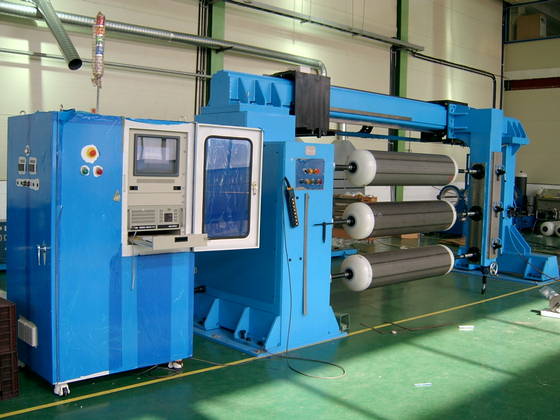Understanding The Filament Winding Machine

Filament winding machines are used to create a wide range of products such as cylinders, pipes, pipe joints, storage tanks, drive shafts, masts and pressure vessels. They do so by winding filaments of various materials such as fibreglass or carbon around a mandrel.
The idea behind these machines is a very simple one. Filaments, most commonly glass or carbon, are wound under pressure around a rotating mandrel. The filament is delivered at a steady pace under pressure by a delivery eye fixed to a carriage. The carriage moves along the axis, or length, of the rotating mandrel. The fibres can be laid down very specifically. They can be wound at an angle or in a pattern, and they can be laid down to a very precise thickness. Sometimes tape is used instead of, or as well as, fibre.
The simplest filament winding mechanisms are two-axis machines; one axis is the rotating mandrel and the other is the delivery carriage. More complicated machines can have four or even six axes of motion.
Many filament winding machines include a mechanism for impregnating the fibre with resin as it is wound. Once the winding process is complete, the resulting product is often heat-treated to cure the resin. This results in light, strong, stiff materials for a wide range of purposes.
After the product has been treated, the mandrel is usually extracted, although in some products such as gas canisters it can remain part of the finished component, forming a liner on the interior of the vessel or pipe.
What Materials Are Used?
The most common materials used in filament winding are glass fibre materials, although carbon and aramids fibres are also used. A range of different resins will also be used to treat the fibres as they are being wound. Aerospace structures, for example, are bathed in epoxy resin or polyurethane resin, but other cheaper resins such as polyester can be used as well. The high proportion of glass fibre used in many filament winding processes results in a good strength-to-weight ratio.
The filament winding process is a simple and effective automated process. The user has a high level of control over the thickness and can rely on the repeatability of the outcome. The winding process is continuous, so the fibre has no breaks in it, which makes the finished product stronger. These strong light open cylinders or closed-end structures can be manufactured in a wide range of diameters and used for a range of purposes.
One common use is for pipes: sewage pipes, gas pipes, water pipes and transmission pipes. Bicycle forks and rims are made by the filament winding process, as are golf clubs and rowing oars. Aircraft fuselage manufacturers use filament winding machines, as do manufacturers of power and transmission poles. Missile casings are manufactured using this process and so are gas cylinders and masts for ocean-going yachts. Even lamp posts are made by filament winding.
